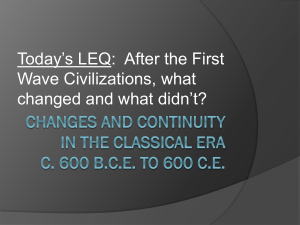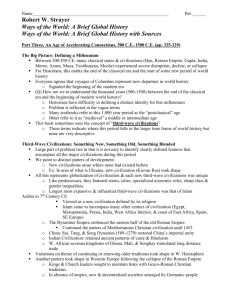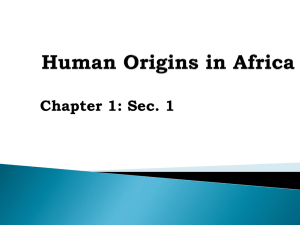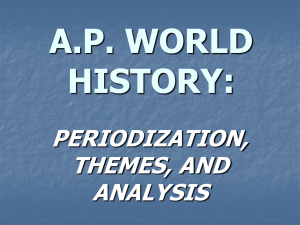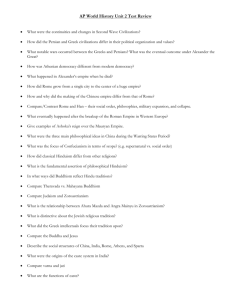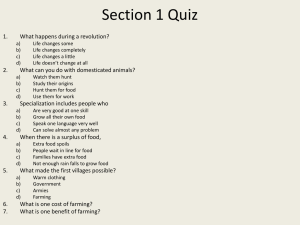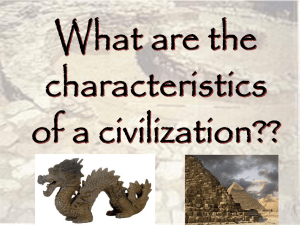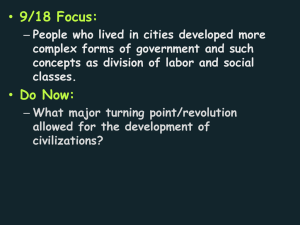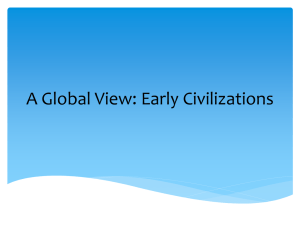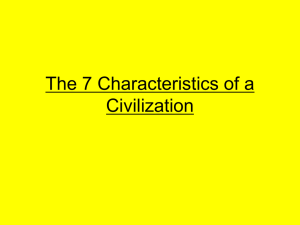Third wave civilizations
advertisement
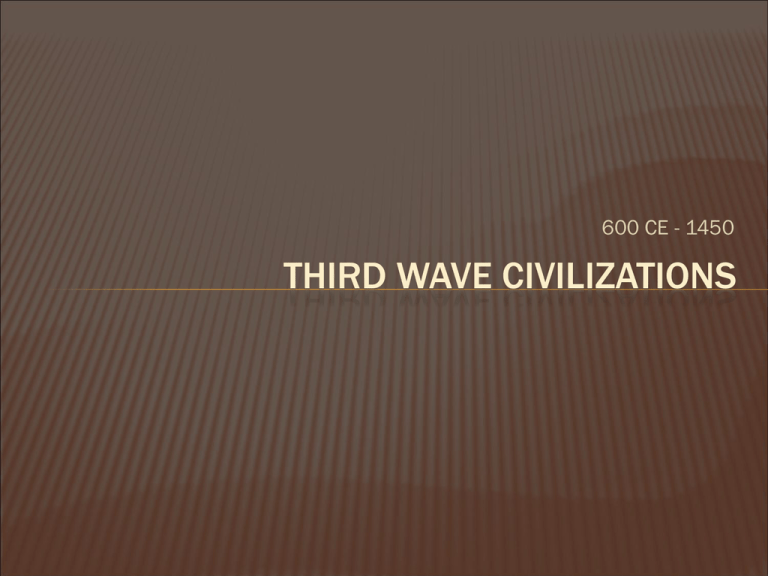
600 CE - 1450 THIRD WAVE CIVILIZATIONS "All mankind is of one author, and is one volume; when one man dies, one chapter is not torn out of the book, but translated into a better language; and every chapter must be so translated...As therefore the bell that rings to a sermon, calls not upon the preacher only, but upon the congregation to come: so this bell calls us all: but how much more me, who am brought so near the door by this sickness....No man is an island, entire of itself...any man's death diminishes me, because I am involved in mankind; and therefore never send to know for whom the bell tolls; it tolls for thee.“ ` John Donne 600 t0 1450 THIRD WAVE CIVILIZATIONS THE QUESTION OF PER IODIZATION Between about 200 and 850 C.E., many classical states and civilizations were disrupted, declined, or collapsed. Columbus’s transatlantic voyages around 1500 mark a new departure in world history. How should we understand the millennium that stretches from the end of the classical era to the beginning of modern world history? PERIODIZATION hard to define a distinct identity for this period Postclassical? Medieval or Middle Ages? Third-wave civilizations First Civs: Egypt, Mesopotamia, China, Indus River 2nd Wave NEW STUFF creation of new but smaller civilizations where none had existed before East African Swahili civilization Kievan Rus Japan, Korea, Vietnam Srivijaya (Indonesia) Angkor (Cambodia) BLENDED STUFF all part of the pattern of increasing globalization of civilization new civilizations were distinctive, but similar to earlier civilizations borrowed heavily from earlier or more established centers DIFFERING TRAJECTORIES RADICAL CHANGE the most expansive and influential thirdwave civilization was Islam Defines the beginning of this period Political and economic system a tool of religion Instead of religion as a tool of the political system PERSISTENT STUFF some older civilizations persisted or were reconstructed new civilizations were distinctive, but similar to earlier civilizations Byzantium China India Niger Valley DIFFERING TRAJECTORIES PERSISTENT STUFF Western Europe: successor states tried to maintain links to older Greco-RomanChristian traditions far more decentralized societies emerged, led by Germans hybrid civilization was created of classical and Germanic elements development of highly competitive states after 1000 PERSISTENT STUFF collapse of classical Maya civilization and Teotihuacán opened the way to a reshaping of an ancient civilization the Inca formed an empire out of various centers of Andean civilization DIFFERING TRAJECTORIES TRANSREGIONAL INTERACTION The theme is the great increase in interaction between the world’s regions, cultures, and peoples. increasingly, change was caused by contact with strangers and/or their ideas, armies, goods, or diseases cosmopolitan regions emerged in a variety of places—“miniglobalizations” ACCELERATING PACE OF INTERACTION Trade Empire Interactions between the two TRADE especially the growth of longdistance commerce led to the establishment of many new states or empires (concentration of wealth) religious ideas, technologies, and germs moved along trade routes EMPIRE large empires, incorporating many distinct cultures under a single political system provided security for longdistance trade many of the third-wave civilizations were larger than earlier ones (Arab, Mongol, and Inca empires) largest empires were created by nomadic or pastoral peoples (Arabs, Turks, Mongols, Aztecs), who ruled over agriculturalists KEY THEMATIC ELEMENTS TRADE AND EMPIRE TOGETHER spread of ideas, technologies, crops, and germs wide diffusion of religions wide diffusion of technologies, many from China and India devastating epidemic disease (e.g., Black Death) linked distant communities focus on accelerating connections puts a spotlight on travelers rather than on those who stayed at home. A focus on interaction raises questions for us about how much choice individuals or societies had in accepting new ideas or practices and about how they made those decisions. So where’s this dude taking us now? THE THIRD WAVE WITH STRAYER STRAYER 8 COMMERCE & CULTURE EAST ASIAN CONNECTIONS Reunified China: Sui, Tang, Song China & the Northern Nomads Coping with China: Korea, Vietnam, Japan China and the Eurasian Economy China and Buddhism EUROPEAN CHRISTENDOM The Byzantine state Building on the Roman past Byzantine church Conversion of Russia Western Christendom Decentralization Accelerating change after 1000 Crusading tradition Catching up/Pluralism in Politics/Reason & Faith ISLAM, AN EMPIRE OF FAITH Birth of a new religion An Arab Empire Islam and cultural encounters India Anatolia West Africa Spain Networks of Faith/Networks of Exchange THE MONGOL MOMENT A long history of pastoral people Breakout from Central Asia Mongol Encounters China Persia Russia Agents of Exchange THE FIFTEENTH CENTURY Cause and Effect, on the edge of change Variations of Communities China & Europe Compared Islam: Ottomans, Safavids, Songhay, Mughal Webs of Connections
